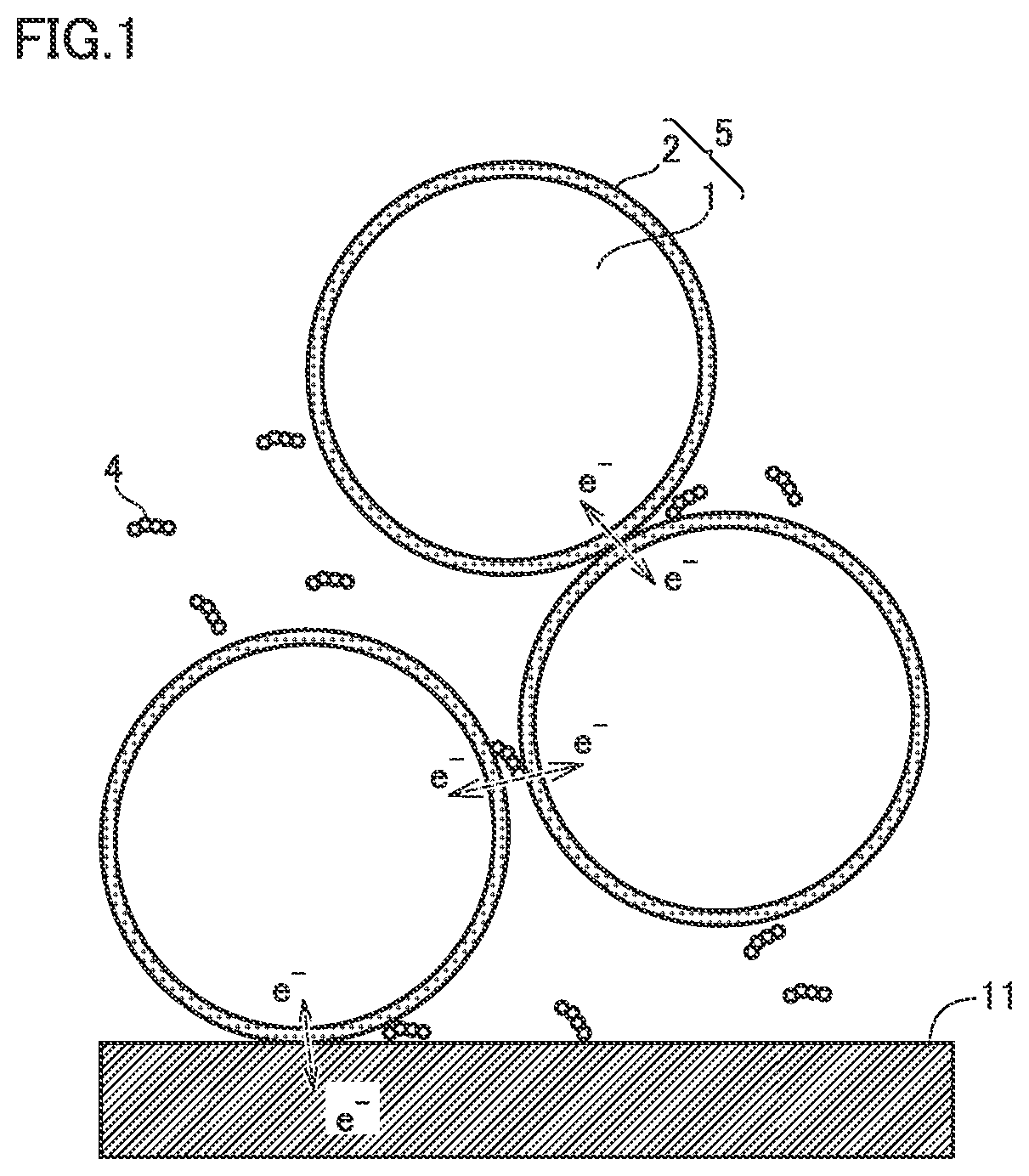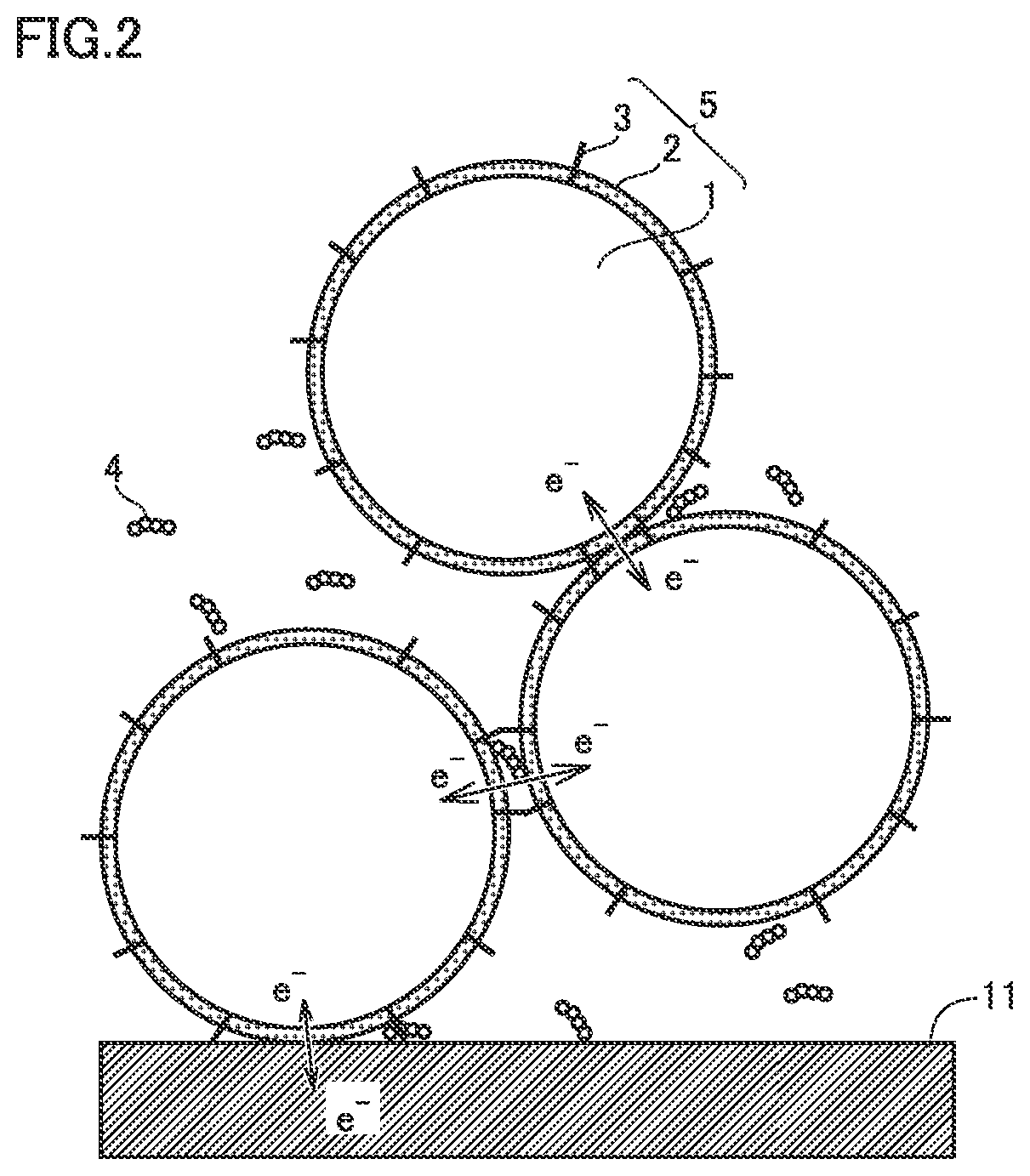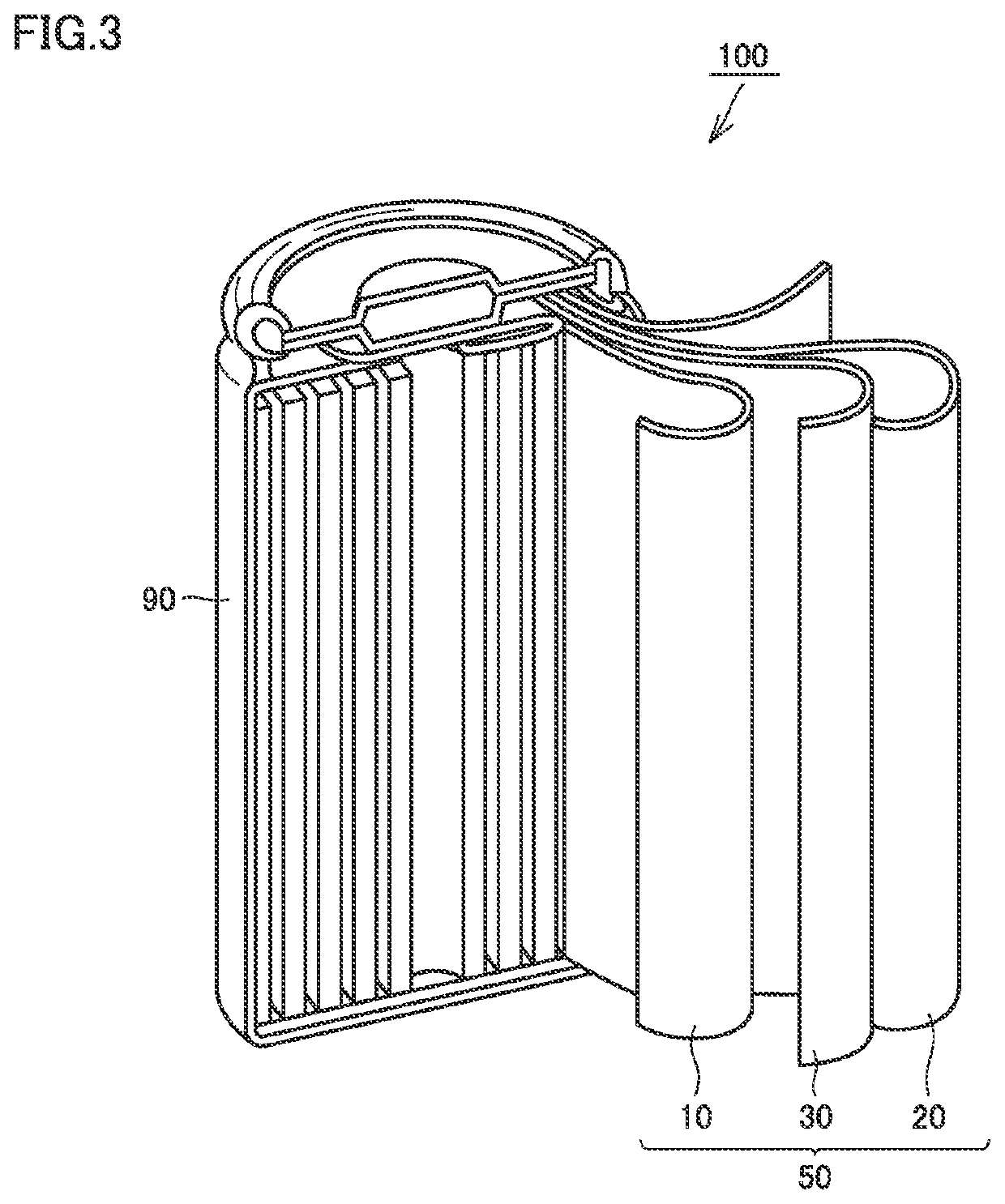Positive electrode material, non-aqueous electrolyte secondary battery, and method of producing positive electrode material
a technology of non-aqueous electrolyte and secondary batteries, which is applied in the direction of positive electrodes, electrode manufacturing processes, cell components, etc., can solve the problems of reducing cycle life, conductive materials not contributing to battery capacity, and oxidative degradation of electrolyte, so as to improve cycle life, improve cycle life, and reduce battery resistance
- Summary
- Abstract
- Description
- Claims
- Application Information
AI Technical Summary
Benefits of technology
Problems solved by technology
Method used
Image
Examples
example 1
[0107]
[0108]>
[0109]Materials described below were prepared.
[0110]Base material particle: Positive electrode active material (LiNi0.8Co0.1Mn0.1O2)
[0111]Boric acid: H3BO3
[0112]CNT: SWCNT (with a diameter from 2 nm to 4 nm and a length from 10 μm to 30 μm)
[0113]Solvent: Water
[0114]The base material particles, the boric acid, the carbon nanotubes, and the solvent were mixed to prepare a first precursor. The amount (amount of substance) of boric acid was 1% of the amount of substance of the positive electrode active material.
[0115]>
[0116]A dryer was used to dry the first precursor. Thus, a second precursor was prepared.
[0117]>
[0118]An electric furnace was used to heat the second precursor. The heating atmosphere was air. The heating temperature was 250° C. Thus, composite particles 5 were formed. Aggregates of composite particles 5 were disaggregated. Thus, a plurality of composite particles 5 were formed. In other words, a positive electrode material was produced. In Example 1, CNTs we...
example 2 to example 7
[0144]A positive electrode material and then a non-aqueous electrolyte secondary battery were produced in the same manner as in Example 1 except that the “boron ratio” and the “CNT ratio” were changed as specified in Table 1 below.
PUM
| Property | Measurement | Unit |
|---|---|---|
| median diameter | aaaaa | aaaaa |
| median diameter | aaaaa | aaaaa |
| electric potential | aaaaa | aaaaa |
Abstract
Description
Claims
Application Information
 Login to View More
Login to View More - R&D
- Intellectual Property
- Life Sciences
- Materials
- Tech Scout
- Unparalleled Data Quality
- Higher Quality Content
- 60% Fewer Hallucinations
Browse by: Latest US Patents, China's latest patents, Technical Efficacy Thesaurus, Application Domain, Technology Topic, Popular Technical Reports.
© 2025 PatSnap. All rights reserved.Legal|Privacy policy|Modern Slavery Act Transparency Statement|Sitemap|About US| Contact US: help@patsnap.com



